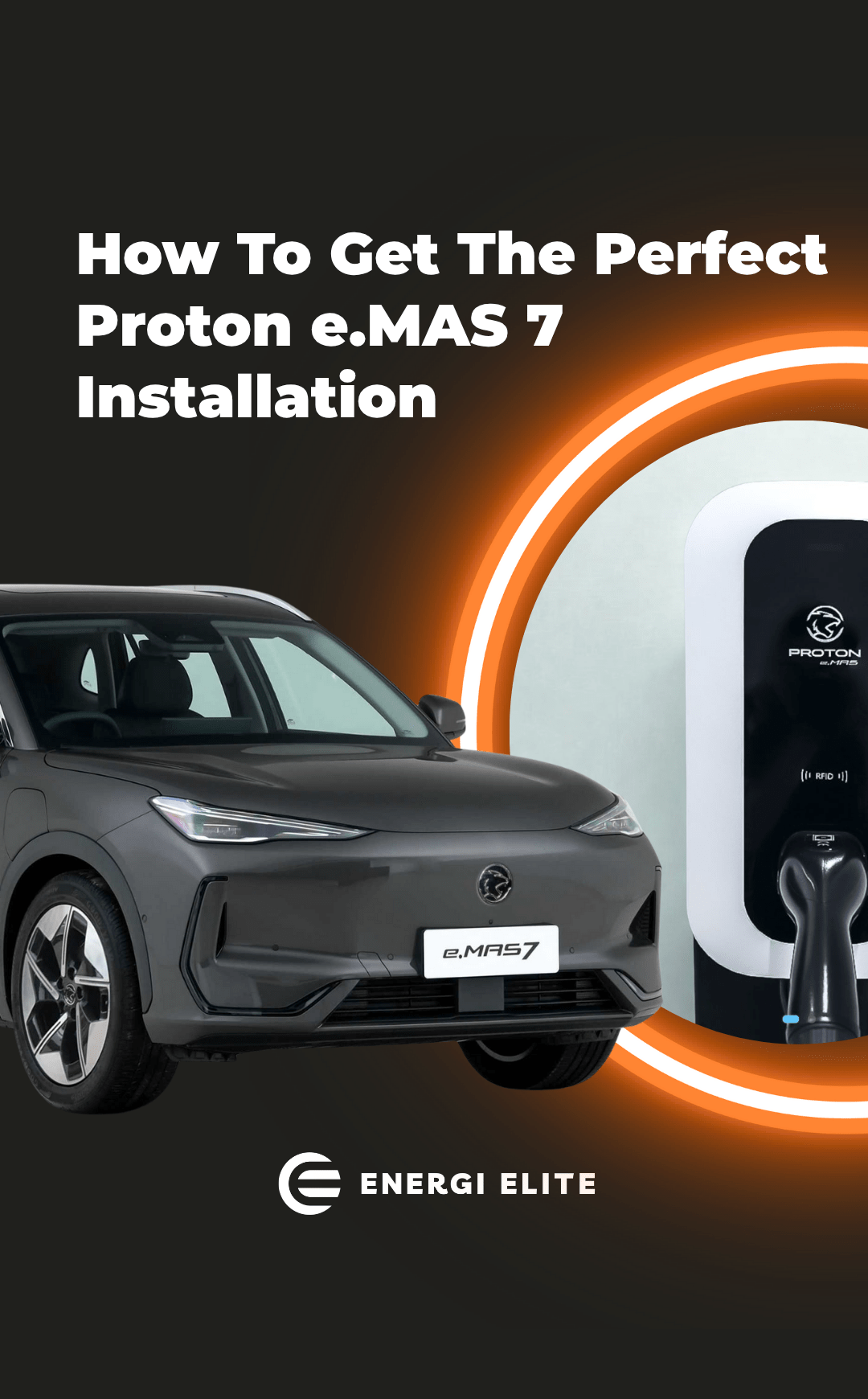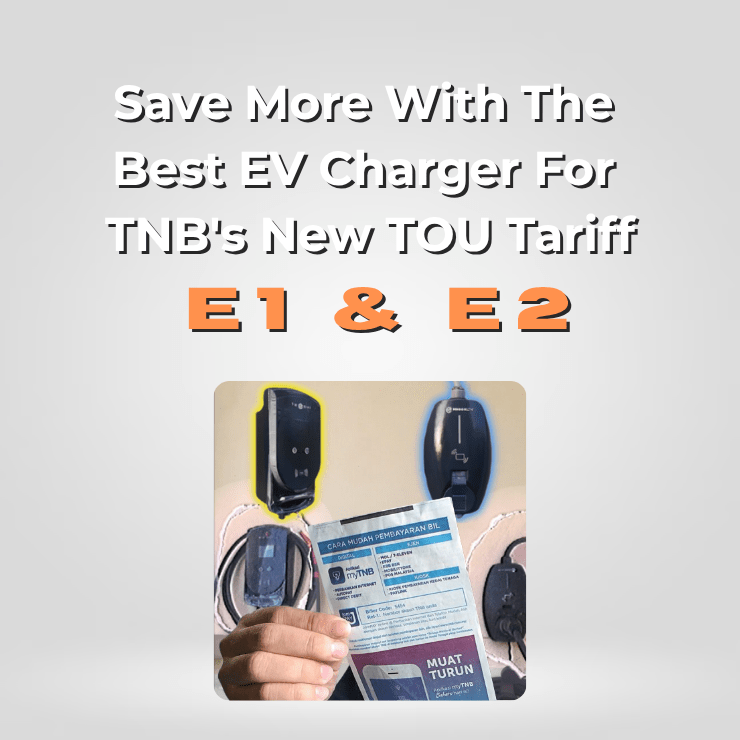One major critique of the public charging stations is their high costs and one major critique of home chargers are their installation prices and chargers itself are expensive.
Why are they so expensive in Malaysia when China has hundreds of company mass producing it ? Aren’t they the same as handphone chargers ? There are so many different types of chargers, how do I know which is the most suitable for me ?
All these are questions to be answered as we go along in our series of youtube videos and articles. For now we are going to explain why EV chargers in general are expensive.
The Factors That Make EV Chargers Expensive:
There is a range of factors contributing to the high costs of EV chargers which make them more expensive than their gasoline counterparts, including:
- High Power Output:
Charging speeds can vary from slower Level 2 chargers (3-7 kW) to fast DC fast chargers (50-400 kW). The high power output required for fast charging makes it necessary to use expensive, specialized components to convert AC power to DC power safely. The charger is also required to have robust safety features, which escalates the equipment’s overall cost. - Safety:
To ensure safety, EV chargers need to have several safety features like thermal management, ground fault detection, and current limiting. Further, since public charging stations need to manage high currents, charger design should meet the highest safety standards. Safety features add an extra layer of complexity and costs to EV chargers. - Installation and Infrastructure:
Public charging stations require additional infrastructure like conduits, cable trays, transformers, switchgear, etc. to the existing electrical distribution infrastructure. These infrastructure changes raise installation costs. Moreover, for high-output DC fast chargers, upgrading the power distribution infrastructure to handle the increased power requirements will escalate costs. - Maintenance Costs:
Public charging stations experience high usage, which makes it necessary to have regular maintenance. Maintenance costs of EV chargers include cleaning, repairs, and replacement of parts, among others.
The Cost Breakdown of Different EV Charging Infrastructure Components: An In-Depth Analysis
Electric vehicle (EV) charging infrastructure is composed of several components that work together to deliver electricity from the charging station to the EV. Understanding the cost breakdown of these components is essential for businesses and individuals looking to install EV charging stations.
In this article, we will examine in detail the primary components of EV charging infrastructure, such as the EVSE, the charging cables, and the connectors.
EVSE

The Electric Vehicle Supply Equipment (EVSE) is the primary component of EV charging infrastructure. It is responsible for delivering electricity from the grid to the EV’s battery. The cost of an EVSE varies depending on the level of charging it provides, as well as its features and functionality. Table 1 shows the average cost breakdown for different levels of EVSE in Malaysian Ringgit (MYR).
| Level of EVSE | Average Cost (MYR) |
|---|---|
| Level 1 | 2,000 – 3,000 |
| Level 2 | 3,000 – 6,000 |
| DC Fast Charging | 80,000 – 120,000 (50 kW unit) |
Charging Cables
Charging cables are the cables that connect the EVSE to the EV’s charging port. They are available in various lengths and are typically rated for a specific amperage. The cost of charging cables depends on the length, amperage rating, and type of connector. Table 2 shows the average cost breakdown for different types of charging cables in MYR.
| Type of Charging Cable | Average Cost (MYR) |
|---|---|
| Level 1 Charging Cable | 200 – 600 |
| Level 2 Charging Cable | 800 – 2,000 |
| DC Fast Charging Cable | 2,000 – 6,000 |
Connectors
Connectors are the interface between the charging cable and the EV’s charging port. There are several types of connectors available, including J1772, CHAdeMO, and CCS. The cost of connectors varies depending on the type of connector and the charging level they support. Table 3 shows the average cost breakdown for different types of connectors in MYR.
| Type of Connector | Average Cost (MYR) |
|---|---|
| J1772 | 200 – 800 |
| CHAdeMO | 10,000 – 14,000 |
| CCS | 8,000 – 12,000 |
Installation Costs
Installation costs are the expenses associated with installing EV charging infrastructure, such as labor, permits, and electrical work. Installation costs vary depending on several factors, including the location, the level of charging, and the existing electrical infrastructure. Table 4 shows the average cost breakdown for different installation factors in MYR.
| Installation Factor | Average Cost (MYR) |
|---|---|
| Electrical Work | 2,000 – 6,000 |
| Labor | 2,000 – 10,000 |
| Permits | 800 – 2,000 |
| Site Preparation | 2,000 – 6,000 |
It’s worth noting that these costs are estimates and may vary depending on several factors, such as location and market conditions. Additionally, prices may fluctuate depending on the brand and quality of the components used. For accurate pricing, it’s recommended to consult with an EV charging infrastructure provider.
Commercial vs. Residential EV Charging Infrastructure: Comparing the Costs
As electric vehicles (EVs) become more popular, there is a growing need for both residential and commercial EV charging infrastructure. While the primary components of EV charging infrastructure are the same for both residential and commercial use, the cost and complexity of installation can vary significantly.
In this article, we will compare the costs associated with commercial and residential EV charging infrastructure to understand if there is a significant disparity in pricing.
EVSE Costs
The cost of an Electric Vehicle Supply Equipment (EVSE) is the primary component of EV charging infrastructure, and it can vary depending on the level of charging it provides, as well as its features and functionality.
Residential EVSEs typically have lower power output than commercial EVSEs and are priced accordingly. The average cost of residential and commercial EVSEs in Malaysian Ringgit (MYR) is shown in Table 1.
| Type of EVSE | Average Cost (MYR) |
|---|---|
| Residential | 1,000 – 6,000 |
| Commercial | 5,000 – 30,000 |
Installation Costs
Installation costs are a significant component of EV charging infrastructure costs, and they can vary widely between commercial and residential installations.
Commercial installations often require additional electrical work and equipment, such as transformers, to support the higher power demands of commercial EV charging infrastructure.
Additionally, commercial installations often require more significant site preparation, such as excavation and paving, to accommodate the additional equipment and ensure accessibility for a wide range of vehicles. Table 2 shows the average installation costs for commercial and residential EV charging infrastructure in MYR.
| Type of Installation | Average Cost (MYR) |
|---|---|
| Residential | 2,000 – 8,000 |
| Commercial | 10,000 – 50,000 |
Maintenance Costs
Another factor to consider is the maintenance costs associated with commercial and residential EV charging infrastructure. Commercial installations typically require more frequent maintenance due to higher usage, and the costs associated with maintenance can be higher than for residential installations.
Table 3 shows the average annual maintenance costs for commercial and residential EV charging infrastructure in MYR.
| Type of Installation | Average Annual Maintenance Cost (MYR) |
|---|---|
| Residential | 500 – 1,000 |
| Commercial | 2,000 – 5,000 |
Frequently Asked Questions:
Why are DC fast chargers more expensive than Level 2 chargers?
DC fast chargers are costlier than Level 2 chargers due to their extra functionality and enhanced features necessary for faster charging speeds. DC fast charging demands expensive equipment such as rectifiers, DC-DC converters, and high power-density capacitors, which elevate the unit cost.
Why are public charging stations more expensive than home chargers?
Public charging stations are more expensive to install and maintain compared to home charging stations. Public Charging stations require additional infrastructure and upgrades to support the increased power load, which escalates installation costs.
Further, they tend to experience higher usage rates, requiring regular maintenance, which increases operating costs.
Are faster chargers bad for the EV battery?
EV fast chargers do not cause any damage to the battery. Fast chargers have battery management systems (BMS) that allow them to control charging, ensuring optimal temperature and voltage to prevent damage to the battery pack.
However, note that frequent use of fast chargers can degrade your EV battery over time, leading to reduced battery life.
Final thoughts:
In conclusion, while EV chargers’ high costs are currently a significant challenge to the robust growth of EV charging infrastructure, policymakers and industry stakeholders must work together to address the barriers. Solutions such as promoting installation incentives, standardizing charging designs, and infrastructure upgrades can bring down costs.
The future of EV adoption requires an extensive network of public charging stations with a range of charging speeds to make EV driving more convenient for consumers. Energi Elite understands the EV industry and has the expertise to advise and guide your EV charging infrastructure investments.




